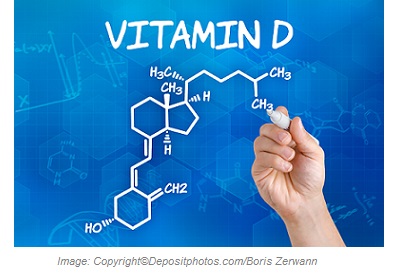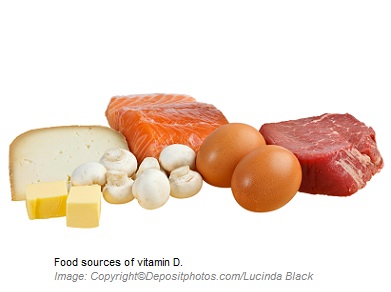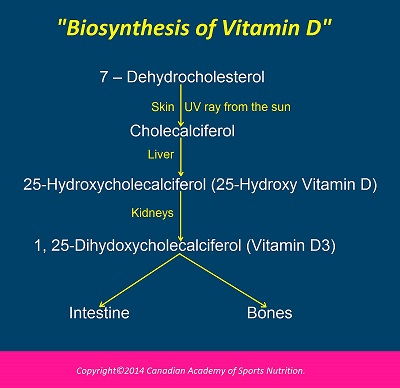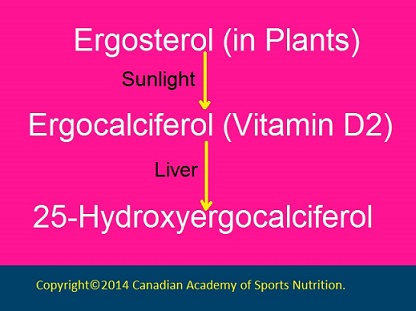Vitamin D is a fat soluble vitamin. Being famous as the “sunshine vitamin”, vitamin D is a hormone and hormone precursor rather than vitamin. The most important function of vitamin D is to maintain blood levels of calcium.
vitamin”, vitamin D is a hormone and hormone precursor rather than vitamin. The most important function of vitamin D is to maintain blood levels of calcium.
Functions of Vitamin D:
- It increases the absorption of calcium, phosphorous, magnesium, and zinc.
- It is important for maintaining normal function of the muscles and heart.
- It is required for a healthy immune system.
- It may affect inflammation.
- It is necessary for normal development of the bones and teeth.
- It is important for normal function of the nervous system and blood clotting.
- It is important for regulating blood levels of insulin.
Food Sources and Absorption:
Vitamin D is made in the skin by exposing to the sun. About 30 minutes of direct exposure of the face and upper extremities to the sun would make about 10,000 – 20, 000 IU vitamin D depending on the following factors:
1) The time of day: the closer to the midday, the more vitamin D you make. Remember, if your shadow is longer than your height (like winter time), you are not making much vitamin D!
2) The type of skin: fair – skinned people make more vitamin D than dark – skinned people, as the skin pigment (melanin) in dark-skinned people blocks ultraviolet rays entering into the skin. This is why dark – skinned people would need more sun exposure to make enough vitamin D.
3) The further away you live from the equator, the less vitamin D you would make.
make.

Cod liver oil is an excellent source of vitamin D with 1 tablespoon providing about 1360 IU. Other food sources are fish, egg yolks, liver, and butter. Every 100 grams of catfish and salmon contains about 425 IU and 360 IU vitamin D, respectively.
Vitamin D from animal sources is in the form of vitamin D3, whereas vitamin D from plant sources is vitamin D2. Mushrooms and dark green leafy vegetables are the best sources of vitamin D2.

Dietary vitamin D is in the form of cholecalciferol, which is absorbed well from the small intestine and then is transported to the liver wherein converts into 25 – hydroxycholecalciferol. Vitamin D3 and D2 have equivalent biologic activity and are activated equally well in humans. Excessive vitamin D is stored in adipose tissues (fats) and small amounts in the liver, spleen, skin, brain, and bones. The absorption of vitamin D is diminished by mineral oils.
Benefits of Vitamin D:
The following conditions may benefit from vitamin D:
- Osteoporosis.
- Osteomalacia (softening of the bones in adults).
- Rickets (softening of the bones in children).
- Cancer prevention (especially prostate, breast, and colon cancers).
- Tuberculosis.
- Psoriasis.
- Multiple sclerosis.
- Crohn`s disease.
- Cystic fibrosis.
- Burns.
- Depression.
- Celiac disease.
- Hypertension.
- Diabetes.
- Insulin resistance.
- Migraine.
- Parkinson`s disease.
Vitamin D Deficiency:
There is no consensus on optimal serum levels of vitamin D, adequacy for bone health, and cut points. The data supports that the optimal level of vitamin D in the blood for good bone health is more than 20 ng/ml (50 nmol/L). Signs and symptoms of vitamin D deficiency appear when daily dietary intake declines to below 2 mcg. Regardless of the cause, the signs and symptoms of vitamin D deficiency are mainly due to decreased calcium absorption.
Mild to moderate vitamin D deficiency has usually no symptoms. Early manifestations of vitamin D deficiency are muscle soreness, weakness, depressed mood, and generalized bone pain. However, chronic vitamin D deficiency results in low level of calcium in the body, leading to skeletal deformities and softening of the bones (osteomalacia in adults; rickets in children).
Potential risk factors for vitamin D deficiency are:
- Old age.
- Lack of sun exposure.
- Dark skin.
- Obesity.
- Malabsorption of fat.
- Liver disease.
- Kidney diseases, such as renal failure and nephrotic syndrome.
- Medications: barbiturates, phenytoin, rifampin, isoniazid, and ketoconazole.
Dosage and Side Effects:
The RDAs for vitamin D in adults are 600 IU (15 mcg)/d for people under 70 years old and 800 IU (20 mcg)/d for people older than 70 years old. The upper limit intake of vitamin D has been set at 4000 IU a day. Contrary to common beliefs, acute intoxication of vitamin D is rare and usually results from excessive ingestion of vitamin D.
The most valid textbook in medicine, Harrison`s Principles of Internal Medicine, 20th, states that “the safety margin for vitamin D is large, and vitamin D toxicity usually is observed only in patients taking doses in the range of 40,000 IU daily“.
Goodman and Gilman`s Manual of Pharmacology and Therapeutics states “the acute or chronic administration of excessive amounts of vitamin D can cause hypervitaminosis D and hypercalcemia. The amount of vitamin D necessary to induce this condition varies widely. As an approximation, prolonged daily ingestion of 50,000 U or more can cause poisoning. The signs and symptoms are those associated with hypercalcemia”.
Vitamin D toxicity causes hypercalcemia (increased blood levels of calcium), which is manifested by weakness, headaches, nausea, diarrhea, loss of appetite, dry mouth, confusion, constipation, disorientation, kidney stones, excessive thirst (polydipsia), and excessive urination (polyuria).
Vitamin D is available as drops, tablets, and injections.
Interactions:
- Aluminium – containing antacids: vitamin D may increase the absorption of aluminum and its toxicity.
- Calcium – channel blockers: vitamin D may decrease the effectiveness of these medications by increasing the blood levels of calcium.
- Thiazides: vitamin D may increase the risk of hypercalcemia resulted from these medications.
- Cimetidine: this medication may lower the effectiveness of vitamin D.
- Anti – seizure medications (barbiturates and phenytoin): they may increase the metabolism of vitamin D, reducing its effectiveness.
- Rifampin: it may decrease the effectiveness of vitamin D.
- Isoniazid: it may impair the activation of vitamin D in the liver.
- Ketoconazole: it may impair the activation of vitamin D in the kidneys.

